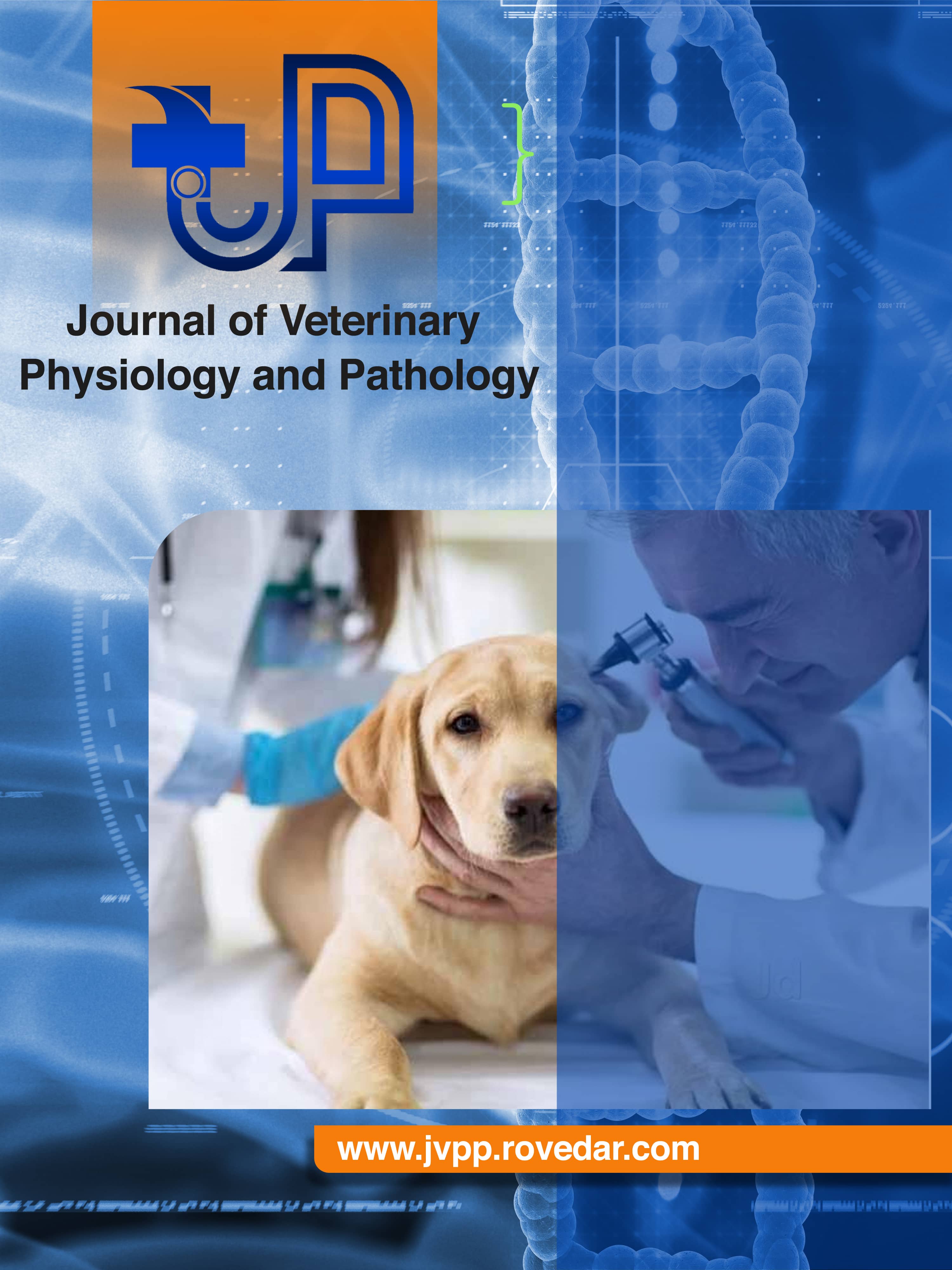Candidiasis in Birds: An Update Candidiasis
Main Article Content
Abstract
Candidiasis is a fungal disease that is induced by yeast from the genus Candida spp. This opportunistic pathogen is present in the skin and gastrointestinal tract of the host, and it tends to induce disease when the host's immune system is suppressed. The aim of this study was to present a short review of Candidiasis in birds, covering aspects, such as host, species, pathogeny, and diagnosis. Candida comprises approximately 200 species, but only a few of them are pathogenic. Among these, Candida albicans is the most frequently isolated in clinical cases. Candida spp. is a polymorphic fungus that can appear in the form of budding yeast, hyphae, or pseudohyphae, depending on the growth environment. They are pretty common in birds, being observed in almost every species. In birds, they can cause infections in the upper digestive system and skin. Clinically, candidiasis in birds is characterized by low morbidity and mortality rates. Affected birds typically display nonspecific indications like depression, anorexia, and inhibited growth. Diagnosis can be performed by laboratory culture, cytology, histopathology, and PCR. On postmortem examination is possible to observe a pseudomembrane with a whitish to yellowish color, easily removed, and an eroded mucosal epithelium of the crop. Infections can be prevented by good sanitary conditions.
Article Details

This work is licensed under a Creative Commons Attribution 4.0 International License.
References
Holzschu DL, Presley HL, Miranda M, and Phaff HJ. Identification of Candida lusitaniae as an opportunis
in humans. J Clin Microbiol. 1979; 10(2): 202-205. DOI: https://doi.org/10.1128/jcm.10.2.202-205.1979
Talazadeh F, Ghorbanpoor M, and Shahriyari A. Candidiasis in birds (Galliformes, Anseriformes, Psittaciformes, Passeriformes, and Columbiformes): A focus on antifungal susceptibility pattern of Cadida albicans and non-albicans isolates in avian clinical specimens. Top Companion Anim Med. 2022; 46: 100598. DOI: https://doi.org/10.1016/j.tcam.2021.100598
Apsemidou A, Füller MA, Idelevich EA, Kurzai O, Tragiannidis A, and Groll AH. Candida lusitaniae breakthrough fungemia in an immuno-compromised adolescent: Case report and review of the literature. J Fungi. 2020; 6(4): 380. DOI: https://doi.org/10.3390/jof6040380
Velasco MC. Candidiasis and cryptococcosis in birds. Sem Avian Exot Pet Med. 2000; 9(2): 75-81. DOI: https://doi.org/10.1053/AX.2000.4620
Ibrahim Z, Ali BH, Khalid Ali R, Sami Jarad A, Farhan WH, and Hasan MS. Avian Candidiasis: A Review. Int J Pharm Res. 2020; 12(1): 1288-1291. DOI: https://doi.org/10.31838/ijpr/2020.12.01.199
Asfaw M, and Dawit D. Review on major fungal disease of poultry. Br Poul Sci. 2017; 6(1): 16-25. Available at: https://idosi.org/bjps/6(1)17/3.pdf
Vieira RG, and Coutinho SDA. Phenotypical characterization of Candida spp. isolated from crop of parrots (Amazona spp.). Pesq
Vet Bras. 2009; 29(6): 452-456. DOI: https://doi.org/10.1590/S0100-736X2009000600002
Pinto LM, de Assis Bezerra Neto F, de Medeiros MAP, Alves DLZ, and Chaves GM. Candida species isolated from pigeon (Columbia livia) droppings may express virulence factors and resistance to azoles. Vet Microbiol. 2019; 235: 43-52. DOI: https://doi.org/10.1016/j.vetmic.2019.05.022
Kemoi EK, Okemo P, and Bii CC. Isolation of Candida species in domestic chicken (Gallus gallus) droppings in Kabigeriet village, Nakuru county Kenya. Eur Sci J. 2013; 9(36): 309-318. Available at: https://core.ac.uk/download/pdf/328023949.pdf
Abbas MS, Yassein SN, and Khalaf JM. Isolation and identification of some important mycological isolates from dropping of birds in Baghdad. J Entomol Zool Stud. 2017; 5(3): 671-673. Availabale at: https://www.entomoljournal.com/archives/2017/vol5issue3/PartJ/5-2-255-338.pdf
Donnelly KA, Wellehan JFX, and Quesenberry K. Gastrointestinal disease associated with non-albicans Candida species in six birds. J Avian Med Surg. 2019; 33(4): 413-418. DOI: https://doi.org/10.1647/2018-419
Domán M, Makrai L, Lengyel Gy, Kovács R, Majoros L, and Bányai K. Molecular diversity and genetic relatedness of Candida albicans isolates from birds in Hungary. Mycopathologia. 2021; 186(2): 237-244. DOI: https://doi.org/10.1007/s11046-021-00527-3
Buck JD. Isolation of Candida albicans and halophilic Vibrio spp. from aquatic birds in Connecticut and Florida. Appl Environ Microbiol. 1990; 56(3): 826-828. DOI: https://doi.org/10.1128/aem.56.3.826-828.1990
Garcia ME, Lanzarot P, Rodas VL, Costas E, and Blanco JL. Fungal flora in the trachea of birds from a wildlife rehabilitation centre in Spain. Vet Med. 2007; 52(10): 464-470. DOI: https://doi.org/10.17221/2049-VETMED
Garcês A, Lopes R, Salinas D, Ferreira M, Infante S, Lopes A, et al. First report of oral Candidiasis by Candida lusitaniae in a red kite (Milvus milvus, Lineu 1758). J Adv Vet Res. 2022; 12(3): 321-323. Available at: https://www.advetresearch.com/index.php/AVR/article/view/956
Dhama K, Chakraborty S, Verma AK, Tiwari R, Barathidasan R, Kumar A, et al. Fungal/mycotic diseases of poultry-diagnosis, treatment and control: A review. Pak J Biol Sci. 2013; 16(23): 1626-1640. DOI: https://doi.org/10.3923/pjbs.2013.1626.1640
Quinn PJ, Markey JF, Leonard FC, Fanning S, and Fitzpatrick ES, editors. Veterinary microbiology and microbial disease, 2nd ed. Wiley-Blackwell; 2011.
Swayne D, Boulianne M, Logue C, McDougald L, Nair N, Suarez D, et al. Diseases in poultry. 1st ed. John Wiley & Sons, Inc; 2019. DOI: https://doi.org/10.1002/9781119371199
Casadevall A. Fungi and the rise of mammals. PLoS Pathog. 2012; 8(8): e1002808. DOI: https://doi.org/10.1371/journal.ppat.1002808
Kafrashi, M. H., & Babazadeh, D. (2022). Prevalence of Avian Gastric Yeast (Macrorhabdus ornithogaster) in Parrots and Parakeets: A Case Study . Journal of World’s Poultry Science, 1(1), 29–31. DOI:10.58803/jwps.v1i1.5
Lord AT, Mohandas K, Somanath S, and Ambu S. Multidrug resistant yeasts in synanthropic wild birds. Ann Clin Microbiol Antimicrob. 2010; 9(1): 11. DOI: https://doi.org/10.1186/1476-0711-9-11





